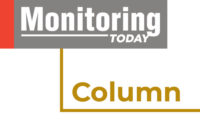Laying the Groundwork for Future Success in MNS


|
| Protex Central is leveraging its success and expertise in fire and life safety systems to poise itself to take advantage of what it sees as a growing demand for mass notification systems. |
About a year and a half ago, Protex Central in Hastings, Neb., saw a potential growth opportunity in mass notification systems (MNS) and made the decision to devote significant resources to developing marketing, sales and installation capabilities that would allow the company to take advantage of that opportunity.
The systems integrator specializes fire, security and life safety systems, and is an authorized distributor of MNS products from Cooper Notification and Notifier, so the move has been a natural extension of its business, says Shawn Mullen, president and chief energy officer for Protex.
“We’ve spent a fair amount of effort promoting the technologies that comprise mass notification systems, much more so than saying ‘Hey, if you have a voice evacuation panel and a fire alarm system, you’ve got a notification system,’” he says. “Yeah, we’ve always done that, but we’re really trying to focus beyond that and leverage the different ways that we communicate and people expect to be communicated with in emergency situations.”
Much of Protex’s efforts have centered on education about mass notification systems in general, including seminars, on-site demonstrations and promoting the technology and its capabilities to its existing customer base. For example, with a large installed base of Notifier products, Protex wanted to make sure those customers were aware of the many options those systems provide.
The process has been slow going at times, primarily because of the inherent challenges around selling into markets where mass notification has found the most success, including higher education, military bases and large campuses, Mullen says. Protex has pursued those opportunities, but has learned that decisions aren’t made very quickly in those spaces.
“We’ve had a lot of success getting people to listen, but we haven’t necessarily delivered a lot of mass notification systems,” he says. “We’re finding out that the more traditional mass notification markets have very long lead times; they have to be budgeted for and fit within the overall organizational framework. But it’s still part of the market and still part of what we focus on.”
Protex has found some success in rethinking potential markets — and capabilities — for mass notification, Mullen says. A prime example of that is Protex’s work to develop a system for a religious organization that would allow the group’s leadership to send pre-programmed special messages to its members via email, smartphone and, thanks to integration within the Cooper platform, even via SiriusXM satellite radio.

|
|
Photo courtesy of Protex Central Shawn Mullen, president and chief energy officer, Protex Central |
“We’ve learned as we’ve gained awareness and experience that you can’t assume opportunities are always in specific vertical markets like higher education, military bases and large campuses. Those markets will always be there, but this particular organization was a unique twist,” he says.
The twist is that the system includes no horns, strobes or speakers on site, but is simply a common platform for communicating. While the project hasn’t been started yet, as the organization is raising funds to pay for it, Mullen believes it is a prime example of the benefit of being flexible, and serves as a testament to the value of internal education.
“If our guys hadn’t been sensitized to the full capabilities of the particular product lines that we carry, they would have shrugged it off and said, ‘Gee, I really can’t help you.’ But as they engaged the opportunity more, they realized, ‘We might be able to do exactly what you want to do, and we can do it this way,’” he says. “Had we just kept the blinders on, thinking we have to get everybody a speaker and a strobe light, that wasn’t going to work.”
Despite the challenges the company has faced, which have slowed its progress in the MNS space, Protex has no intention of cutting and running. Mullen says the company believes that as the idea of mass notification becomes more prevalent in the marketplace, driven largely by NFPA 72, demand for those systems will follow. And as a result of its current efforts, Protex will be well-positioned to seize those opportunities, he adds.
“In my 28 years in the business, I’ve never had anyone call and say, ‘I’ve just got to have a fire alarm system.’ No one ever does that. They come to you because they have to or they’ve identified a pain point,” he says. “There are going to continue to be opportunities in this particular market space. The challenge, as it is with any business decision, is how much do you spend to get in and how long do you keep at it if you’re not getting immediate results? Our company is 46 years young, and we’ve always been committed to the safety and security industry. The emergency notification is a natural extension of what we already do in the fire alarm business, so we’re going to continue to be involved and look for opportunities and continue to promote it.”
Mullen’s advice to integrators who may be contemplating a move into mass notification — or expanding their existing efforts — is that you may not reap the fruits of your labor right away, but that patience and perseverance will eventually pay off.
“If you think you have a skill set that lends itself to this particular market, you have to be patient. You have to make the investment in understanding the technology, how it works and how it’s used; you have to up-front both costs so you can be conversant in it. Then you just have to be diligent and patient and continue to look for the opportunities and be ready to respond when they do show up,” he says.
Looking for a reprint of this article?
From high-res PDFs to custom plaques, order your copy today!









